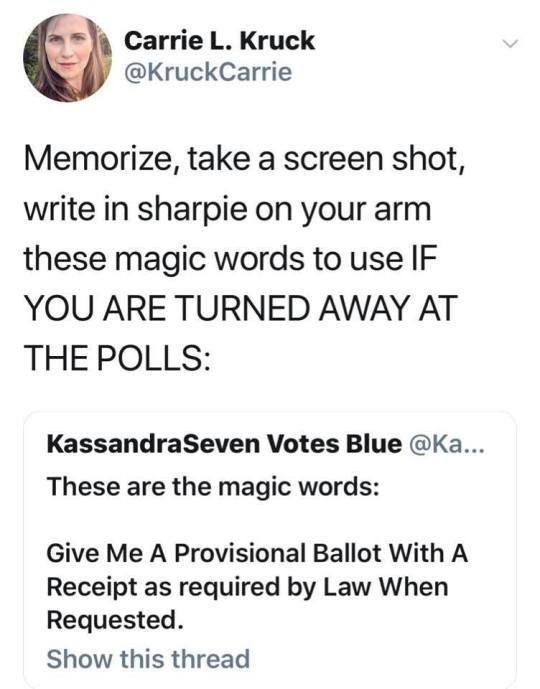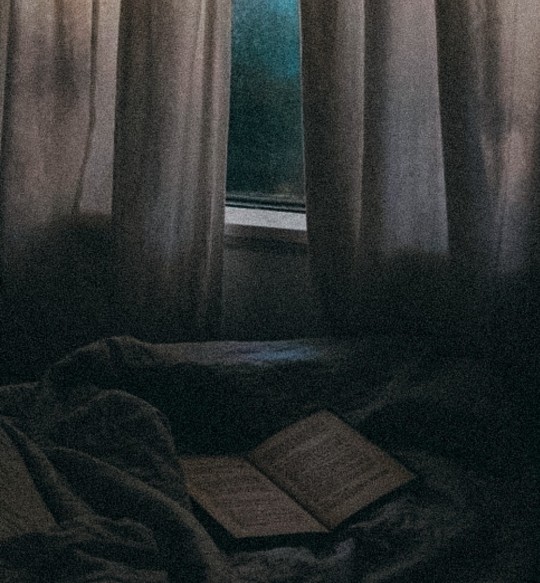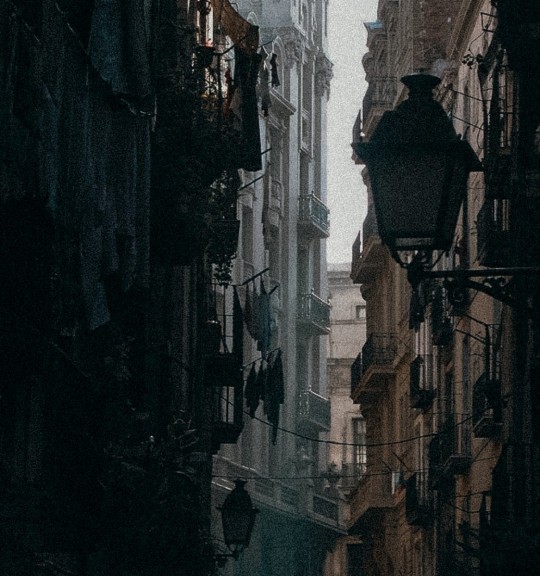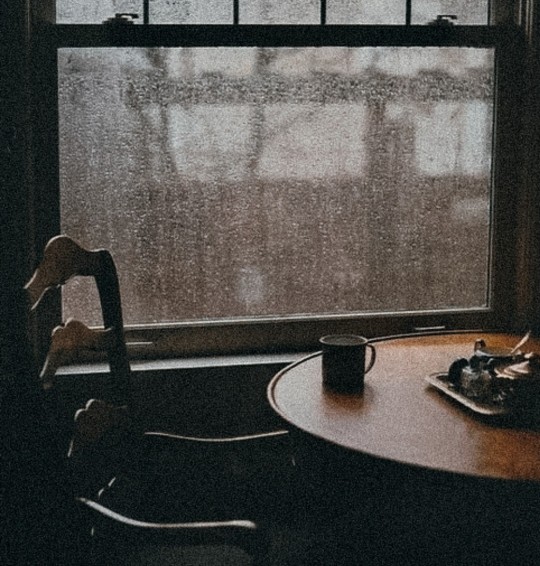Just a student loving the chaotic experience of gaining knowledge
Don't wanna be here? Send us removal request.
Text
And speaking of Sophia Tolstoy, her diaries are just so depressing.
“I am to gratify his pleasure and nurse his child, I am a piece of household furniture, I am a woman. I try to suppress all human feelings. When the machine is working properly it heats the milk, knits a blanket, makes little requests and bustles about trying not to think […].“
She wrote this when she was 19, one year into her marriage to Leo and as she was pregnant with the first of his 13 children.
A few years later, when she was 25 or so:
“I am so often alone with my thoughts that the need to write in my diary comes quite naturally … Now I am well again and not pregnant—it terrifies me how often I have been in that condition. He said that for him being young meant “I can achieve anything”. For me […] reason tells me that there is nothing I either want or can do beyond nursing, eating, drinking, sleeping, and loving and caring for my husband and babies, all of which I know is happiness of a kind, but why do I feel so woeful all the time, and weep as I did yesterday? I am writing this now with the pleasantly exciting sense that nobody will ever read it, so I can be quite frank with myself […].“
During her 12th pregnancy she wrote about taking scalding baths and jumping from high pieces of furniture to try and miscarry. And at one point while reading her husband’s diary (which he told her to read) she found the sentence “There is no such thing as love, only the physical need for intercourse and the practical need for a life companion.” In her own diary she wrote “They ebb and flow like waves, these times when I realise how lonely I am and want only to cry…”
A few years before her husband’s death, she published a cycle of prose poems titled “Groans”, under the pseudonym “A Tired Woman”.
77K notes
·
View notes
Text
Academic writing advice inspired by Umberto Eco’s ‘How to Write a Thesis’:
Planning
Determine primary sources/bibliography.
Determine secondary sources/bibliography.
Find title.
Brainstorm a table of contents with as much detail as possible (with chapters, sections and even paragraphs and sub-paragraphs - see How to Write a Thesis’ own table of contents as an example at the end of this document) (if the first drafted table of contents is good enough, it will not be necessary to start the writing from the beginning).
Do a first draft of the introduction.
Note-taking and research
Use Google Scholar to make sure you do not miss important sources.
Keep the table of contents in mind when researching and take notes of which sources could go where.
While note-taking, differentiate which parts could be used as quotations from the ones that are simply important for the argument.
Eco underlines the importance of what he calls reading sheets, which can be understood as your notes on your readings. According to him, these should contain:
information about the author if he is not a well-known figure;
a brief (or long) summary;
they should mostly consist of quotations (accompanied by all the corresponding page numbers)
any commentaries you might want to add;
an indication of which part (or parts) of your table of contents the information mentioned belongs to.
Keep reading sheets on primary sources (which should be the longest) separate from those on secondary sources (which should only be 1-2 pages long).
In the end, re-read the notes and color-code all the different parts according to where they would fit in your table of contents.
Writing and editing
A good place to start would be by redrafting the introduction.
Define every key/technical term used/mentioned unless indisputably obvious.
General writing tips:
keep sentences short;
do not be afraid to repeat the subject twice (ex: Roberta went to the shop (…) Roberta bought carrots and tomatoes);
avoid excessive details;
avoid subordinate clauses (orações subordinadas);
avoid vague language;
avoid unnecessary adjectives;
avoid the passive voice.
While drafting, write everything that comes to mind. Leave the editing for the end.
Use your tutor as a Guinea pig. Make them read your first chapters (and, progressively, all the rest) well before delivery is due.
Ask for as much feedback as possible. Ask colleagues, friends and/or family to read your work. They will provide you with more diversified feedback, as well as allowing you to know if your writing is clear to anyone.
Stop playing ‘solitary genius’.
Don’t insist on starting with the first chapter. Start with what you know best and feel more comfortable writing about, then fill in the gaps.
Leave time for editing and try to take at least a one or two days long break in between writing and editing.
Do not forget to fill in the gaps. When you revisit your writing, go through it with all these writing tips in mind as well as a conscience of what your most common mistakes are.
Use Hemingway in the final editing phase.
Quotations and footnotes
Since there are two kinds of sources (primary and secondary), there are also two kinds of quotations: either we quote a text which we will interpret, or we quote a text which supports your interpretation.
Some quotation rules to know:
“Quote the object of your interpretive analysis with reasonable abundance.”
“Quote the critical literature only when its authority corroborates or confirms your statements. (…) when quoting or citing critical [aka secondary] literature, be sure that it says something new, or that it confirms authoritatively what you have said.”
“If you don’t want readers to presume that you share the opinion of the quoted author, you must include your own critical remarks before or after the passage.”
“Make sure that the author and the source of your quote are clearly identifiable.”
“When a quote does not exceed two or three lines, you can insert it into the body of the text enclosed in quotation marks. (…) When the quote is longer, it is better to set it off as a block quotation. In this case the quotation marks are not necessary, because it is clear that all set-off passages are quotes, and we must commit to a different system for our observations. (Any secondary developments [like the quote’s reference] should appear in a note.) (…) This method is quite convenient because it immediately reveals the quoted texts; it allows the reader to skip them if he is skimming, to linger if he is more interested in the quoted texts than in our commentary, and finally, to find them immediately when need be.”
Some footnote rules to know:
“Use notes to add additional supporting bibliographical references on a topic you discuss in the text. For example, ‘on this topic see also so-and-so.’”
“Use notes to introduce a supporting quote that would have interrupted the text. If you make a statement in the text and then continue directly to the next statement for fluidity, a superscript note reference after the first statement can refer the reader to a note in which a well-known authority backs up your assertion.”
“Use notes to expand on statements you have made in the text. Use notes to free your text from observations that, however important, are peripheral to your argument or do nothing more than repeat from a different point of view what you have essentially already said.”
“Use notes to correct statements in the text. You may be sure of your statements, but you should also be conscious that someone may disagree, or you may believe that, from a certain point of view, it would be possible to object to your statement. Inserting a partially restrictive note will then prove not only your academic honesty but also your critical spirit.”
“Use notes to provide a translation of a quote, or to provide the quote in the original language.”
10K notes
·
View notes
Text
friendly reminder that academia must aim to include a wide range of perspectives and you can't just pick and choose which narratives to include in your academia. if you really want to be knowledgeable and intellectual, you can't choose to exclude perspectives that are not white, eurocentric and/or upperclass (or fit into some elitist aesthetic for that matter) and you cannot call yourself an academic if you only listen to the voices of rich white men. while the whole education system is at fault for not incorporating poc-inclusive and non eurocentric narratives into academia, and perhaps because of that, it is your responsibility to actively seek out voices that don't fit into the extremely narrow perimeter of views and voices that are usually prominent in academia. it's your duty as an academic to step outside of these narrow perimeters and educate yourself, especially if you've only been surrounded by a small variety of perspectives your whole life; and it's your duty to do this actively.
4K notes
·
View notes
Text
REBLOG IF
- you are a studyblr
- you are super friendly
- you love when people message you
- you want to support everyone in the community
one thing i love about this community is that it is one big family and everyone is ready to support eachother. reblog this and follow the people that also reblog and start some super cute supportive friendships because you all deserve the best
13K notes
·
View notes
Text
Not to be a fucking nerd or anything but writing academic papers is actually super fun when you have a genuine interest in the topic!
73K notes
·
View notes
Photo
This is not related to my usual posts but needs to be spread as much as possible, so please share this info

A huge number of people are already getting fucked over when it comes to being allowed to cast a vote in the upcoming elections. Let’s try to minimize what that number COULD be as much as possible. It might also be useful to have the number for the ACLU written down (or already in your phone) so you can CALL THEM while still at the polling place and get whatever information is needed in order to see about having the ACLU sue them. Write down names. Get witnesses. Take photos. MAKE IT VERY CLEAR TO THE POLLSTERS THAT YOU ARE GOING TO HOLD THEM ACCOUNTABLE. (Unless you have reason to believe they’re going to be assholes and try to have you arrested for doing so, in which case, be as subtle as possible.)
109K notes
·
View notes
Text






A mellow feel good playlist for a rainy day//
2K notes
·
View notes
Text
Cultural Dark Academia
After my last post about the lack of representation in academia, I felt it neccessary to provide some examples of what I’m talking about. Obviously there are more countries in the world than I can list and provide books for, so for a quick list this is what I got. !! Keep researching !! If you have any more books by POC please reply them !! If a country isn’t listed, that doesn’t mean it’s not important, this is just what I could get together real quick. If I made any mistakes, please let me know, we’re all learning. We need to help each other end eurocentrism in academia, so value representation and educate yourselves 💓💓💓
Chinese:
The Art of War by Sun Tzu
The Dream of the Red Chamber
The Water Margin
Romance of the Three Kingdoms
The Journey to the West
The Scholars
The Peony Pavilion
Border Town by Congwen Shen
Half of Man is Woman by Zhang Xianliang
To Live by Yu Hua
Ten Years of Madness by agent Jicai
The Field of Life and Death & Tales of Hulan River by Xiao Hong
Japanese:
A Personal Matter by Kenzaburo Oë
Pakistani:
Moth Smoke by Mohsin Hamid
How to Get Filthy Rich in Rising Asia by Mohsin Hamid
Ghulam Bagh by Mirza Athar Baig
Masterpieces of Urdu Nazm by K. C. Kanda
Irani/Persian:
Rooftops of Tehran by Mahbod Seraji
Savushun by Simin Daneshvar
Anything by Rumi
The Book of Kings by Ferdowsi
The Rubiyat by Omar Khayyam
Shahnameh (translation by Dick Davis)
Afghan:
Earth and Ashes by Atiq Rahimi
A Thousand Splendid Suns by Khaled Hosseini
Indian:
The God of Small Things by Arundhati Roy
Aithihyamala, Garland of Legends by Kottarathil Sankunni
The Gameworld Trilogy by Samir Basu
Filipino:
Twice Blessed by Ninotchka Rosca
The Last Time I Saw Mother by Arlene J. Chai
Brazilian:
Night at the Tavern by Álvares de Azevedo
The Seven by André Vianco
Don Casmurro by Machado de Assis
Colombian:
Chronicle of a Death Foretold by Gabriel Garcia Marquez
Delirio by Laura Restrepo
¡Que viva la música! by Andrés Caicedo
The Sound of Things Falling by Jim Gabriel Vásquez
Mexican:
Bless Me, Ultima by Rudolf Anaya
Adonis Garcia/El Vampiro de la Colonia Roma by Luis Zapata
El Complot Mongol by Rafael Bernal
Egyptian:
The Cairo Trilogy by Nahuib Mahfouz
The Book of the Dead
Nigerian:
Rosewater by Tade Thompson
Things Fall Apart by Chinua Achebe
Malian:
The Epic of Sundiata
Senegalese:
Poetry of Senghor
Native American:
The Inconvenient Indian by Thomas King
Starlight by Richard Wagamese
Almanac of the Dead by L. Silko
Fools Crow by James Welch
Australian Aborigine:
Dark Emu by Bruce Pascoe
First Footprints by Scott Cane
My Place by Sally Morgan
American//Modern:
Real Life by Brandon Taylor
Namesake by Jhumpa Lahiri
The Hate U Give by Angie Thomas
The Poet X by Elizabeth Acevedo
Internment by Samir’s Ahmed
Their Eyes Were Watching God by Zora Neale Hurtson
Rivers of London Series by Ben Aaronovitch
19K notes
·
View notes
Text
looking to follow more blogs who post any of the following, likes and reblogs if you do are much appreciated:
dark academia
light academia
mythology
history
( classic ) literature / theatre
cottagecore / meadowcore
art / art history
472 notes
·
View notes
Text
Why toothpaste and cement harden over time
Take a look inside the cap of your favorite toothpaste, and you might see hard, white residue, a firm version of the smooth paste you squeeze onto your brush.
Many paste materials, also known as dense colloidal suspensions, stiffen as they age. Structural dynamics, or changes in the loads the materials undergo over time, are partly responsible for this change, but for decades, experts have suspected that there’s more going on inside these materials.
Now, University of Delaware chemical and biomolecular engineering professor and chair Eric Furst and a team of researchers from the Ecole des Ponts and University Paris-Est and in France have discovered a process called contact-controlled aging that explains some age-related changes in paste materials.
They found that contacts form between particles, stabilizing the microstructure of these materials. Then, those contacts stiffen, increasing the stiffness of the materials.
The team described their findings in a paper published in the journal Nature Materials.
Read more.
49 notes
·
View notes
Photo

“it is an exercise in making and remembering the golden hours, the blue ones, the lilac-coloured dusks. the floral afternoons, the windswept nights, and the freshly-spring-cleaned living room evenings.”
introducing: the living hours, a blog by yours truly where i wax very lyrical about making coffee, taking sunlit showers, and appreciating life’s mundanities
793 notes
·
View notes
Text


Letter writing featuring homemade book scraps
125 notes
·
View notes
Photo


08.02.2018 // The Chapel, Exeter College, University of Oxford.
–
Studygram: https://www.instagram.com/_ellenbrewster/
2K notes
·
View notes
Text
So as a continuation of this post I made in frustration about how anglo-centric most “must-read” book lists are, I went and found a few lists with a focus on non-English speaking authors (sorted by number of books listed):
8 Must-Read Foreign Books Translated Into English (Babbel)
The non-western books that every student should read (The Guardian)
10 best translated fiction (Independent - has suggestions regarding editions + prices)
49 Incredible Books From 49 Different Countries (Huffpost - has amazon links to all the books, which is great to find the editions but please please please support your local bookstores!!!!)
100 Must-Read Classics in Translation (BookRead - Amazon links again. Most bookstores will offer to order books for you if they don’t have them, please utilise their services and support local shops whenever possible!)
All these lists have reviews and feature books from a wide range of countries. I haven’t read every single review but I browsed the lists to make sure they wouldn’t all just name the same books and they don’t!!
I hope you’ll find inspiring new reads on those lists! :)
13K notes
·
View notes


